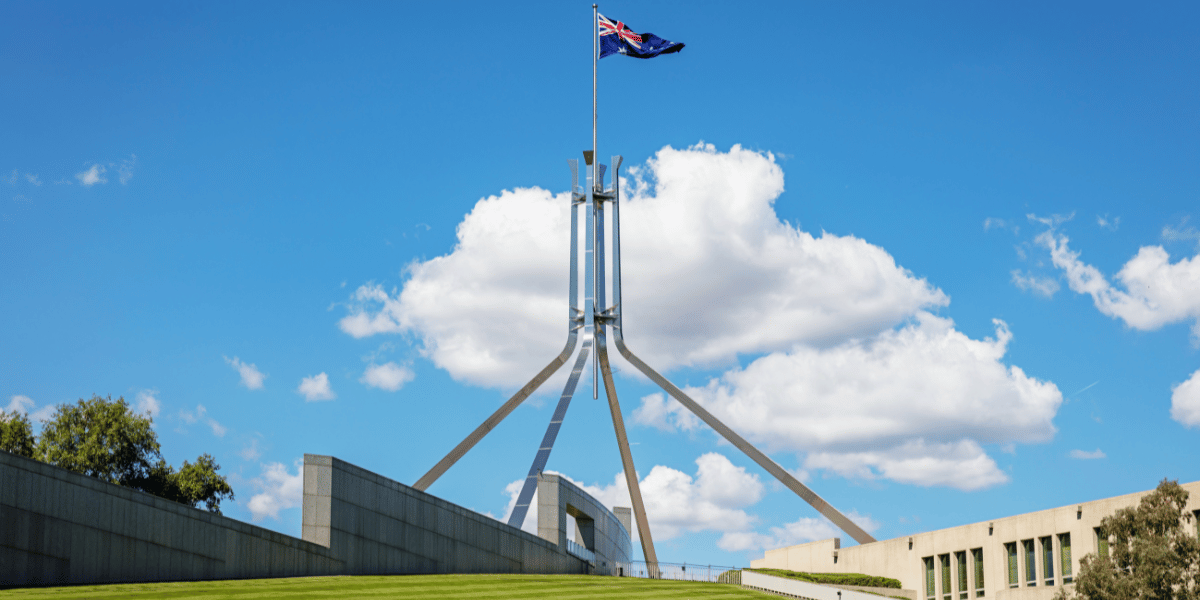23 May 2025
Long before the COVID-19 pandemic brought the problems to global attention, social isolation and loneliness were already recognised as critical public health issues in Australia.
Evidence consistently shows that social isolation and loneliness are linked to serious mental and physical health risks, including depression, anxiety and early mortality. These are not simply emotional challenges, but urgent social and health issues demanding policy attention.
To develop effective responses, it is essential to distinguish between social isolation (a lack of social contacts or interactions) and loneliness (the subjective feeling of being alone). These differences affect how we measure the problem and how we intervene to support those most affected.
Given that approximately one in three Australians report feeling lonely in their own homes, housing and planning policy should engage with the problem of social isolation. This is particularly important for people living in high-density but poorly designed apartments, or in suburbs with limited community infrastructure.
As Australia accelerates housing development to address affordability and supply shortages, the less visible – but equally significant – challenge of a lack of everyday social connection through housing also deserves serious policy attention.
Good housing and planning policy can build and sustain social connection
The design of our housing and neighbourhoods matters. Homes that isolate residents – especially older people, individuals living alone or low-income families – can worsen social disconnection. The COVID-19 lockdowns exposed how isolating many living environments can be, particularly for vulnerable populations.
In addressing the housing affordability crisis, governments are increasingly turning to medium-density housing, also known as the “missing middle”. This housing type seeks to bridge the gap between high-rise apartments and detached suburban homes. Developments such as townhouses, duplexes, manor houses, low-rise apartments and courtyard housing are essential for increasing supply and improving affordability in growing urban centres.
In this context, the NSW Government’s Low and Mid-Rise Housing Policy is a significant change in state planning aimed at addressing housing supply in urban and regional areas. Stage 1, which commenced in July 2024, permitted dual occupancy and semi-detached houses in traditional low-density residential areas. Stage 2, which came into effect in February 2025, introduced broader planning controls to encourage a mix of low and mid-rise housing types, such as terraces, townhouses and apartments within 800 metres of designated city centres and transport hubs.
While these changes represent a move towards density and diversity of housing, the policy is focused on supply-side solutions and transport-oriented development, with little explicit attention to the social dimensions of higher-density living. Considerations such as social interaction, walkability and inclusive urban design can ensure that increased density supports not only the quantity of housing but also the social quality. If thoughtfully implemented, the Low and Mid-Rise Housing Policy has the potential to enhance social connection within urban and suburban communities significantly. By enabling more diverse housing forms within walkable distances of local centres and public transport, the policy can encourage more vibrant, mixed communities where people are more likely to interact in shared spaces.
Currently, however, many existing medium-density projects in Australia lack the design quality to support healthy, connected lives. The key drawbacks include minimal or poorly activated shared spaces, as well as a lack of integration with green space, transport and local services.
In the understandable drive to boost supply and density to make housing more affordable, we must also ask: are we designing medium-density housing to promote connection, or are we inadvertently creating environments that isolate?
Poorly designed medium-density developments risk deepening the very social isolation we are trying to reduce. Without careful attention to layout, communal spaces, shared open spaces and the integration of services, such medium-density development environments can reproduce the disconnectedness of high-rise living without the benefits of greater density or community infrastructure.
When done well, however, medium-density housing presents a unique opportunity to address this issue by promoting human-scaled, socially inclusive environments. Models like Nightingale Housing in Australia and co-housing in Denmark demonstrate how thoughtful design of communal gardens, shared facilities and resident-led governance can turn housing into a platform for connection rather than isolation.
Higher density living, when paired with good urban design, can support the creation of small-scale gathering places such as courtyards, communal gardens, shared walkways and local parks that facilitate neighbourly interaction and a sense of belonging. Furthermore, housing diversity supports intergenerational and socio-economic mixing.
Solving the housing crisis requires more than just increasing supply. We must also rethink what we build and how we build it. The “missing middle” is not just a housing typology gap. It is a chance to fill a social gap. By designing medium-density housing that fosters connection, we can address both affordability and the growing crisis of loneliness.
Transit-Oriented Development: a framework for socially connected housing
A promising way to embed social connection as a key consideration in housing policy is transit-oriented development (TOD). This planning approach concentrates housing, jobs and services around high-quality public transport. When implemented well, it supports walkable, mixed-use and inclusive neighbourhoods.
TOD is highly compatible with medium-density housing. Unlike high-rise towers or detached suburbs, the missing middle can deliver both density and liveability but only if it is designed with people – not just buildings – in mind.
By embedding medium-density housing in TOD frameworks, we can:
- Support daily social encounters through street-level activity and walkable environments.
- Connect residents to jobs, education and community spaces via accessible transport.
- Foster diverse, multigenerational communities with shared spaces that encourage interaction and reduce isolation.
The NSW Government’s existing policy on TOD aligns with the objectives of low-rise and mid-rise housing policy. Integrating lessons from existing TOD initiatives into the implementation of mid-rise housing reforms can help ensure that new developments contribute to cohesive, liveable and socially vibrant communities. As planning efforts increasingly focus on mid-rise development and urban renewal, aligning housing policy with TOD principles provides a coordinated path towards both housing provision and social sustainability.
A policy to build for belonging
Moving ahead, the solution is not just to build more homes, but to build better homes. Our design and planning policies should actively support wellbeing, inclusion and community connection, harnessing frameworks such as TOD. We need to provide planning incentives for developments that include communal areas, green spaces and shared amenities. Critical priorities include:
- Integrating social impact in housing policy: Evaluating new developments for their impact on social connection, in addition to their economic or environmental sustainability.
- Embedding loneliness as a policy priority: Recognising social connection as a determinant of health and integrating loneliness metrics into housing and urban development frameworks.
- Supporting diverse housing models: Encouraging co-housing, multi-generational living and community-led housing initiatives through pilot programs and funding.
Legislative changes may be necessary to incorporate social connectivity and TOD principles into the planning system. While current low and mid-rise housing policy is supported by planning controls and guidelines, these controls often focus on land use, height and density, without mandating the types of design and infrastructure that enhance social cohesion, such as public open spaces, pedestrian streets and mixed-use zoning.
Incorporating stronger social and community-oriented requirements into state-level planning instruments, such as state environmental planning policies (SEPPs), can help ensure that developments provide housing as well as liveability and connectivity. In addition, aligning local government planning controls with TOD principles may require regulatory updates.
Drawing on the three priorities outlined above, here are seven steps policymakers can take to ensure that medium-density housing supports social wellbeing:
Embedding loneliness and integrating social impact in housing policy
- Classifying loneliness and social isolation as public health and planning issues, not just social ones. This means embedding social sustainability into housing policy through a recognition that social connection is a core component of health and wellbeing.
- Embedding social connection and wellbeing into planning frameworks.
- Promoting design standards that encourage social interaction, such as shared courtyards, front porches and walkable street layouts.
Supporting diverse housing models
- Incentivising developments that include shared spaces, walkability and mixed-use zoning in areas targeted for growth. Revising zoning and planning frameworks could also support the development of connected mixed-use, medium-density neighbourhoods near services and transit.
- Encouraging a diversity of housing types to cater to families, singles, older adults and multi-generational households.
- Investing in demonstration projects and partnerships with non-profits and community housing providers to pilot inclusive models of medium-density living that demonstrate inclusive, human-centred design.
- Building small-scale, frequent gathering places within walking distance to cafés, parks, libraries and community gardens and implementing street-level design that encourages interaction, such as front yards or communal mail areas.
The rare but urgent opportunity for the NSW Government is to harness the push for greater housing supply to also improve the quality of homes and the healthy, connected communities they can foster. But without strong design standards and a focus on social outcomes, we risk reproducing urban environments that isolate rather than connect.
By making housing design central to urban policy, the NSW Government can address the housing crisis and build neighbourhoods where people do not just live but truly belong.
Dr Parisa Ziaesaeidi is an architect with experience in both academia and industry. She is an architecture academic at Western Sydney University. She holds a PhD from the Queensland University of Technology in Australia. Her research interests focus on social sustainability, large and small-scale built environments and neighbourhood design. Parisa’s expertise in this area is reflected in publications in international journals, conferences, and architectural magazines, where she has established herself as an architectural journalist.
Image credit: Kindel Media from Pexels
Features
Sepani Senaratne, Shashini Jayakodi and Srinath Perera
George (Kev) Dertadian
Subscribe to The Policymaker
Explore more articles
Libby Hackett, Jordan Ward, Jack Isherwood, Bonnie Bley, Hannah Lobb, Isabella Whealing and Hugh Piper
Features
Sepani Senaratne, Shashini Jayakodi and Srinath Perera
George (Kev) Dertadian
Explore more articles
Libby Hackett, Jordan Ward, Jack Isherwood, Bonnie Bley, Hannah Lobb, Isabella Whealing and Hugh Piper
Subscribe to The Policymaker







